“As I was walking one morning for pleasure
I spied a cowpuncher riding along
His hat was throwed back and his spurs were a-jingling
And as he approached he was singing this song
“Whoopee ti yi yo, git along little dogies
It’s your misfortune and none of my own
Whoopie ti yi yo, git along little dogies
You know that Wyoming will be your new home” – Git Along, Little Dogies (traditional)

“Git Along, Little Dogies” is a traditional cowboy ballad believed to be adapted from an old Irish folk song. Also known by the title, “Whoopie Ti Yi Yo”, the song is first mentioned in the 1893 journal of historian and author Owen Wister, who wrote The Virginian, and is considered to be the “father” of Western fiction. The melody and lyrics of the song were first published in 1910 in John Lomax’s Cowboy Songs and Other Frontier Ballads.
Although the song is typically performed with four or five verses, each followed by the repeated chorus, my research turned up a number of different versions, some with verses that varied slightly from those performed by other artists. The “dogies” referenced in the lyrics were the motherless or neglected calves, herded along by cowboys. The song was doubtless a favorite accompaniment of cowpunchers on the long cattle drives of the late nineteenth-century, especially along the famed Goodnight-Loving trail.
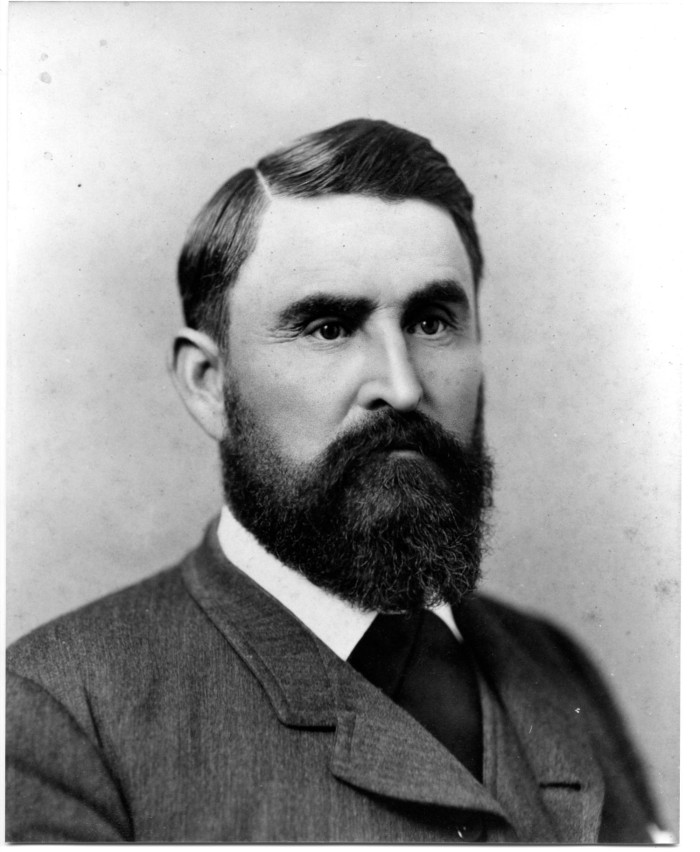
Charles (Charlie) Goodnight was born March 5, 1836, in Macoupin County, Illinois, northeast of St. Louis. While Goodnight was still very young his father died, and in 1846 he moved to Waco, Texas with his mother and step-father.
By the time Charlie Goodnight was 20, he was working as a cowboy, as well as serving with the local militia, where he protected settlers from Comanche raiders. In 1857 he joined the Texas Rangers. As a Ranger, Goodnight was known for raising a posse that located the Indian camp where Cynthia Ann Parker was living as the wife of Comanche chief Peta Nocona. Parker had been kidnapped by the Indians as a young girl and had been assimilated into the tribe. She was also the mother of Quanah Parker, who after surrendering his Quahadi band to Fort Sill, Oklahoma, has been called the “Last Chief of the Comanche.”

Cynthia Ann Parker 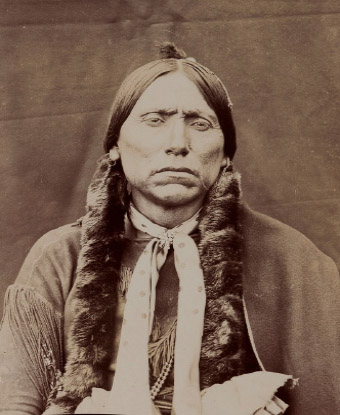
Quanah Parker
In 1861, at the outbreak of the Civil War, Goodnight joined the Confederate States Army, where most of his time was spent as a scout for a Texas frontier regiment, patrolling against Indian raids. Describing what constituted a good scout Goodnight stated, “First, he must be born a natural woodsman and have the faculty of never needing a compass except in snowstorms or darkness.”[4]
Following the war, Charlie Goodnight returned to working as a cowboy.
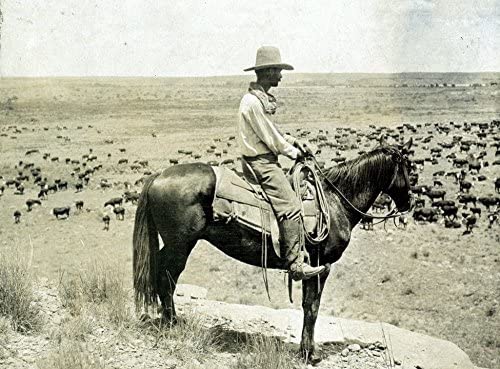
“Early in the springtime, we round up the dogies
Mark ’em and brand ’em and bob off their tails
Round up the horses, load up the chuck wagon
Then throw the little dogies out on the long trail” – Git Along Little Dogies (traditional)
At war’s end, Charlie Goodnight participated in a near-statewide roundup of feral Texas Longhorn cattle that had roamed free during the previous four years of war. After this “making the gather”, Goodnight partnered with Oliver Loving to drive their combined herds to market.

“We ride on the prairies across the wide rivers
And on through the flats where there’s never a town
Our horses are weary, we’re tired and we’re hungry;
Lay still, little dogies, stop roamin’ around” – Git Along Little Dogies (traditional)

Oliver Loving was born on December 4, 1812, in Hopkins County, Kentucky. As a young man he farmed in Kentucky, then in 1843 moved with his brother, brother-in-law, and their families to Texas. By 1857 Loving had accumulated one thousand acres of Texas land, as well as a large herd of cattle. He entrusted his nineteen-year-old son, Joseph, to drive the cattle up the Shawnee Trail and into Illinois, where he made a profit of $36 a head. The success of the venture encouraged Loving to repeat the drive the following year.
“Night comes on and we hold ’em on
the bedground
The same little dogies that rolled on
so slow
We roll up the herd and cut out the
stray ones
Then roll the little dogies like never
before” – Git Along Little Dogies (traditional)
In the summer of 1860, along with a partner, Oliver Loving started a herd of 1,500 head toward Denver, Colorado to feed miners in the area. In the spring of 1861, after wintering his herd near Pueblo, Colorado, he sold the cattle for gold and set off to return to Texas but was barred by Union authorities from traveling south due to the outbreak of the Civil War. After intercession from Kit Carson, Loving was allowed to return home.
During the war Oliver Loving was commissioned to provide beef to the Confederate States Army, but as the war ended it is reported the Confederate government still owed him between $100,000 and $250,000. In addition, the postwar markets were left inadequate for the available supply of beef.

In 1866 Loving heard that there was a need for beef at Fort Sumner, New Mexico, where over 8,000 Navajos had recently been interned at the nearby Bosque Redondo reservation. Farming conditions there were poor, creating an urgent demand for food sources. Along with military personnel, and a growing population of settlers, there was a market for fresh food products in the region.

Oliver Loving partnered with Charlie Goodnight, and together with the assistance of eighteen cowhands, they drove their combined herd of 2,000 cattle from west Texas to Fort Sumner. There they received eight cents a pound for the steers in the herd, but the Army was not interested in the remaining stocker cattle. Goodnight returned to Texas with $12,000 in gold to purchase more cattle, while Loving continued north with 800 cows & calves, selling the remainder of the herd at the railhead in Denver, Colorado.
After gathering a new herd in Texas, Charlie Goodnight drove the cattle to New Mexico, where he and Loving spent the winter of ’66-’67 ranching and supplying beef to Fort Sumner and the city of Santa Fe.
“When spring comes along we round up
the dogies
We stick on their brands and we bob off
their tails
Pick out the strays, then the herd is
inspected
And the very next day we go out on the
trail” – Git Along Little Dogies (traditional)
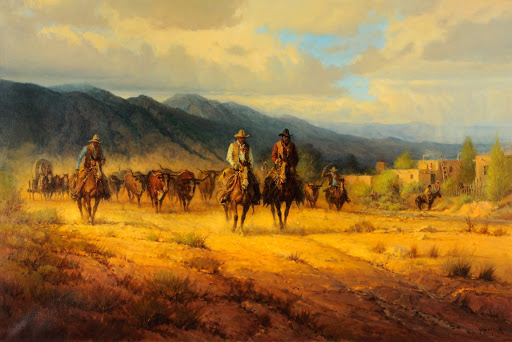
In the spring of 1867, Goodnight and Loving both returned to Texas for more cattle to take north. The drive was hampered by steady rains and constant threats from Indians. During a heavy storm, the herd was attacked by Comanches, leaving it divided and scattered. Oliver Loving and his trusted scout, “One Arm Bill” Wilson, left the herd to go ahead to Fort Sumner and inform them of the delay, only to be pinned down by a band of Comanches along the Pecos River. In the attack Loving suffered gunshot wounds to his arm and side. Sending Bill Wilson back to the herd, Loving was able to evade the Indians and with the help of Mexican traders, reached Fort Sumner.
Oliver Loving died from gangrene poisoning on September 25, 1867. Although the gunshots wounds he received in the Indian attack were not fatal, the medicine of the day was not sufficient to prevent the ensuing infection. While amputation of Loving’s arm may have prevented his death, it is reported that the fort’s doctor “had never amputated any limbs and did not want to undertake such work.”
The story is told that Charlie Goodnight sat by his partner’s bedside during the two weeks that it took for Loving to succumb to his infection. Loving’s dying wish was to be buried back home in Texas. Goodnight assured his friend and business associate that he would indeed honor that wish. Following his death, Oliver Loving was temporarily interred at Fort Sumner, as Charlie Goodnight continued driving their herd into Colorado. True to his word, Goodnight later had Loving’s body exhumed and returned to Weatherford, Texas, where he was laid to rest in Greenwood Cemetery on March 4, 1868.
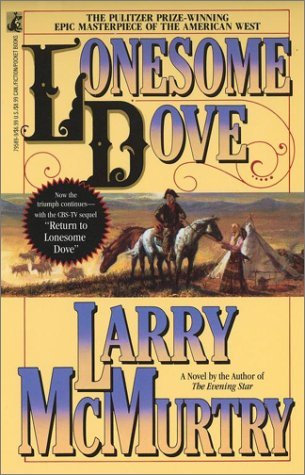
To fans of Larry McMurty’s Pulitzer Prize-winning novel, Lonesome Dove, the relationship between Oliver Loving and Charles Goodnight may have a familiar ring. The two were indeed the inspiration for McMurtry’s Gus McCrae & Woodrow Call, with Woodrow transporting Gus’s body back to Texas after his death following an Indian attack. Charlie Goodnight even makes cameo appearances in all four novels of McMurtry’s Lonesome Dove series.
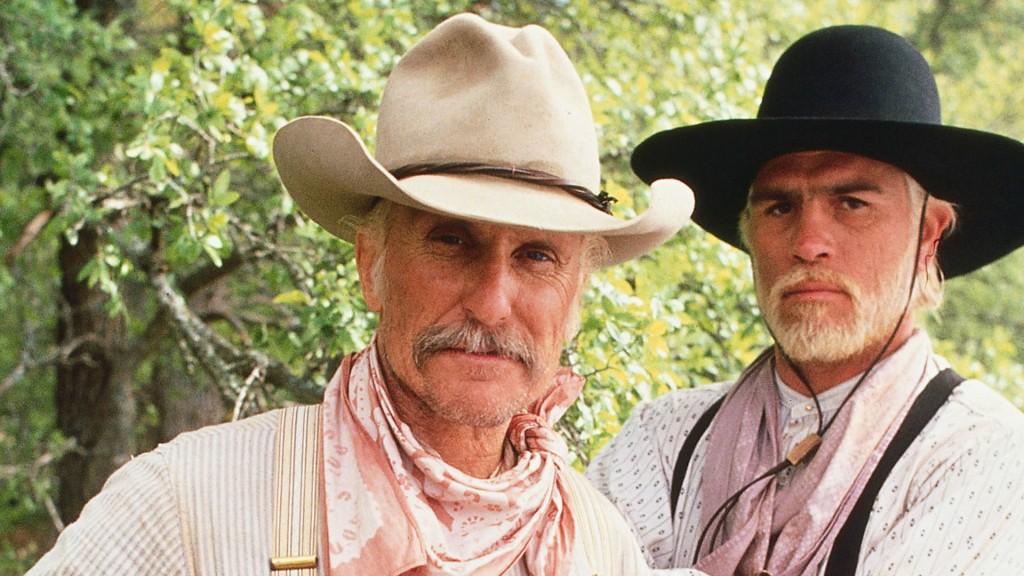
“Night is a-comin’ and the dogies
are strayin’
They’re farther from home than they’ve
been before
Come on, little dogies, it’s time to be
rollin’
When we get to Wyoming, we’ll roll no
more” – Git Along Little Dogies (traditional)
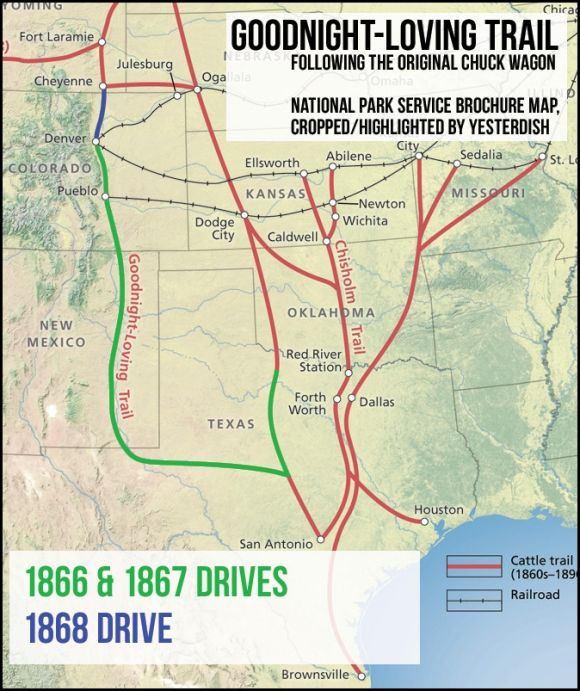
In February of 1868, Charlie Goodnight began driving herds along what became known as the Goodnight-Loving Trail up into Wyoming, where the cattle were butchered and sold locally, or shipped eastward to Chicago via the railroads. In the following decade, cattle ranches stocked with Texas Longhorns that had been driven up the trail became established throughout the state, with Cheyenne becoming a local hub for the cattle business with its connection to the Union Pacific Railroad.
“Your mother was raised way down in Texas
Where the jimson weed and the chollas grow
But we’ll fill you up on those prickly-pear briars
Until you are ready for Idaho” – Git Along Little Dogies (traditional)

In 1876, Charlie Goodnight settled into the life of a Texas rancher, effectively ending his days of driving cattle across the open range. Partnering with Irish businessman John Adair, together they formed the JA Ranch, the first cattle ranch located in the Texas Panhandle, and the oldest privately owned ranch in that region to this day. Goodnight also founded the Panhandle Stockman’s Association, which worked to improve cattle-breeding methods and to reduce the threat of rustlers and outlaws, and he is credited as the inventor of the chuck wagon.
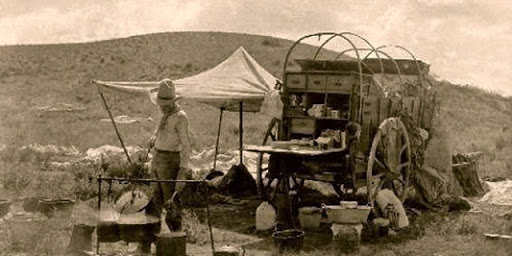
Herds of cattle would continue to be driven northward along the Goodnight-Loving Trail into the 1890s, further cementing the two early pioneers’ legacy in the fledgling industry. Oliver Loving was inducted into the National Cowboy Hall of Fame in Oklahoma City, Oklahoma; Loving County, Texas, and the town of Loving, New Mexico were both named in his honor.
Charles Goodnight has been inducted into the Hall of Great Westerners of the National Cowboy & Western Heritage Museum (as has Loving), and is also called the “father of the Texas Panhandle.” He is remembered in a number of works of fiction & non-fiction, as well as the various historical monuments dedicated to his and Oliver Loving’s work.
“Some boys go up the long trail for
pleasure
But that’s where they get it most
awfully wrong
For you’ll never know the trouble they
give us
As we go drivin’ them dogies along
“Whoopee ti yi yo, git along little
dogies
It’s your misfortune and none of my own
Whoopie ti yi yo, git along little
dogies
You know that Wyoming will be your new
home” – Git Along, Little Dogies (traditional)
“Git Along, Little Dogies” has been recorded by numerous artists, including Bing Crosby, Roy Rogers, Tex Ritter, the Sons of the Pioneers, Pete Seeger, The Kingston Trio, Charlie Daniels, David Bromberg, Alvin and the Chipmunks, Suzy Bogguss and Nickel Creek. The song has been named one of the Top 100 Western songs of all time by members of the Western Writers of America.
Sources:
https://en.wikipedia.org/wiki/Git_Along,_Little_Dogies
https://en.wikipedia.org/wiki/Charles_Goodnight
https://en.wikipedia.org/wiki/Oliver_Loving
https://www.pbs.org/weta/thewest/people/d_h/goodnight.htm
https://en.wikipedia.org/wiki/Goodnight%E2%80%93Loving_Trail
https://www.history.com/this-day-in-history/cattle-pioneer-oliver-loving-dies-of-gangrene
All photos sourced through internet searches, none belong to the author
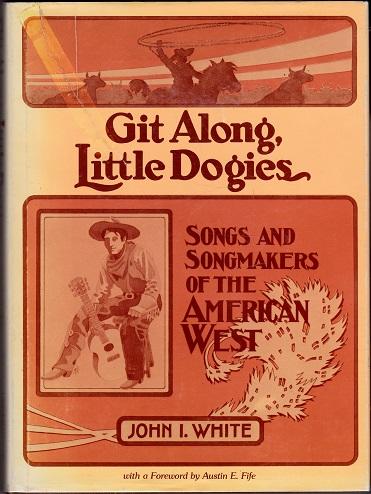
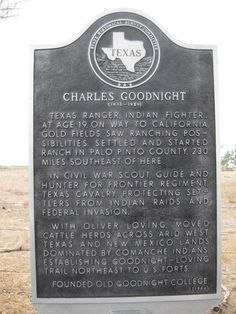
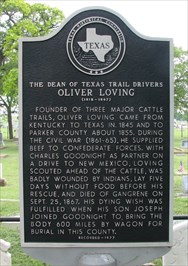
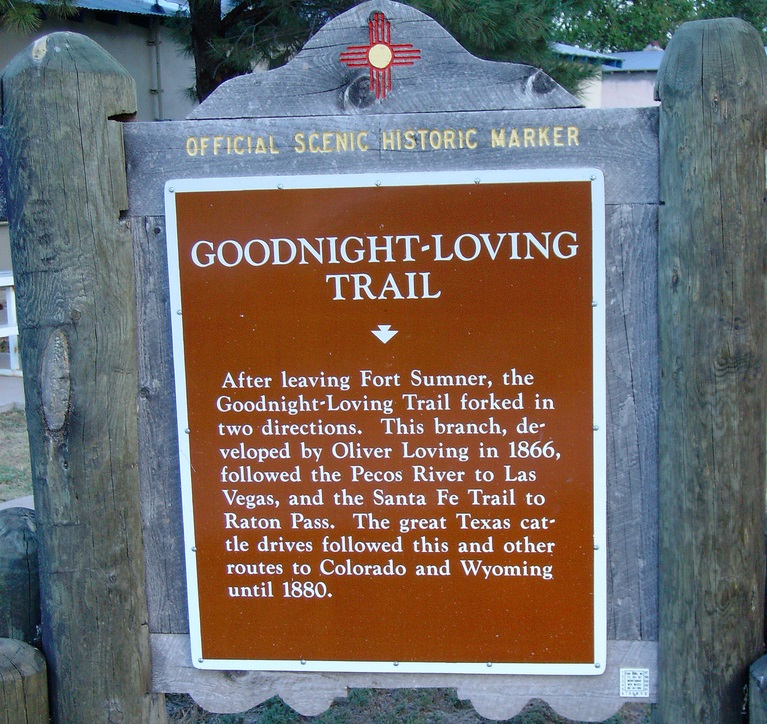

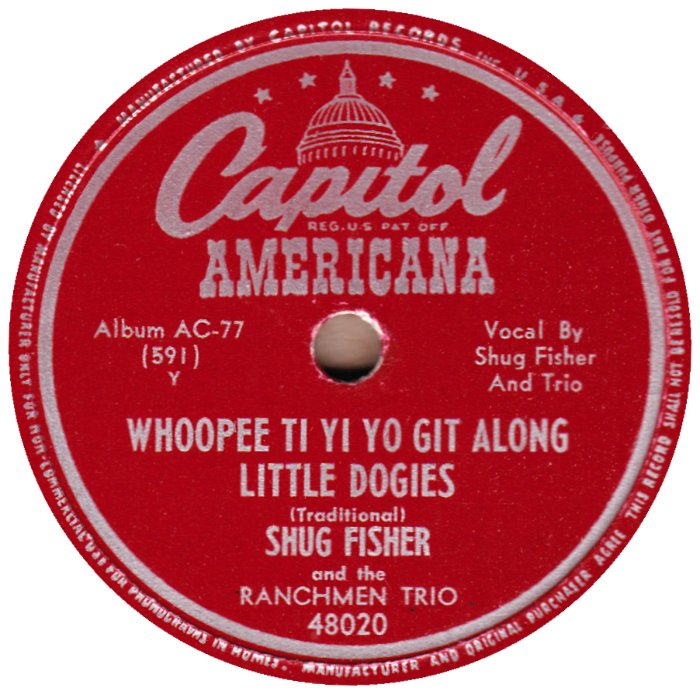
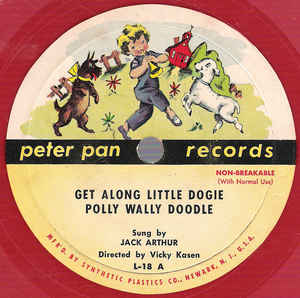
Marty Dolciamore
Your subject matter is so beautifully American and your research and narrative so compelling –
Thanks for this tribute
Marty, thanks for the comment. I have been thoroughly enjoying producing the blog. The research is the fun part – wandering, sleuthing, discovering – but sometimes the actual writing feels a lot like work. When the post is ready for publication, that is the reward for the effort. Glad you liked it.
Hi webmaster – This is by far the most effective looking web-site I’ve seen. It was totally uncomplicated to navigate and it was effortless to look for that particulars I required. Wonderful layout and excellent content! Each web site should have that. Amazing job
Hmm is anyone else experiencing problems with the pictures on this blog loading?
I’m trying to determine if its a problem on my end or
if it’s the blog. Any feed-back would be greatly appreciated.
Thurman, which post specifically were you experiencing trouble with the photos loading, and from what platform were you viewing it?
I want to to thank you for this wonderful read!! I absolutely loved every little bit of it. I have you saved as a favorite to look at new stuff you postÖ